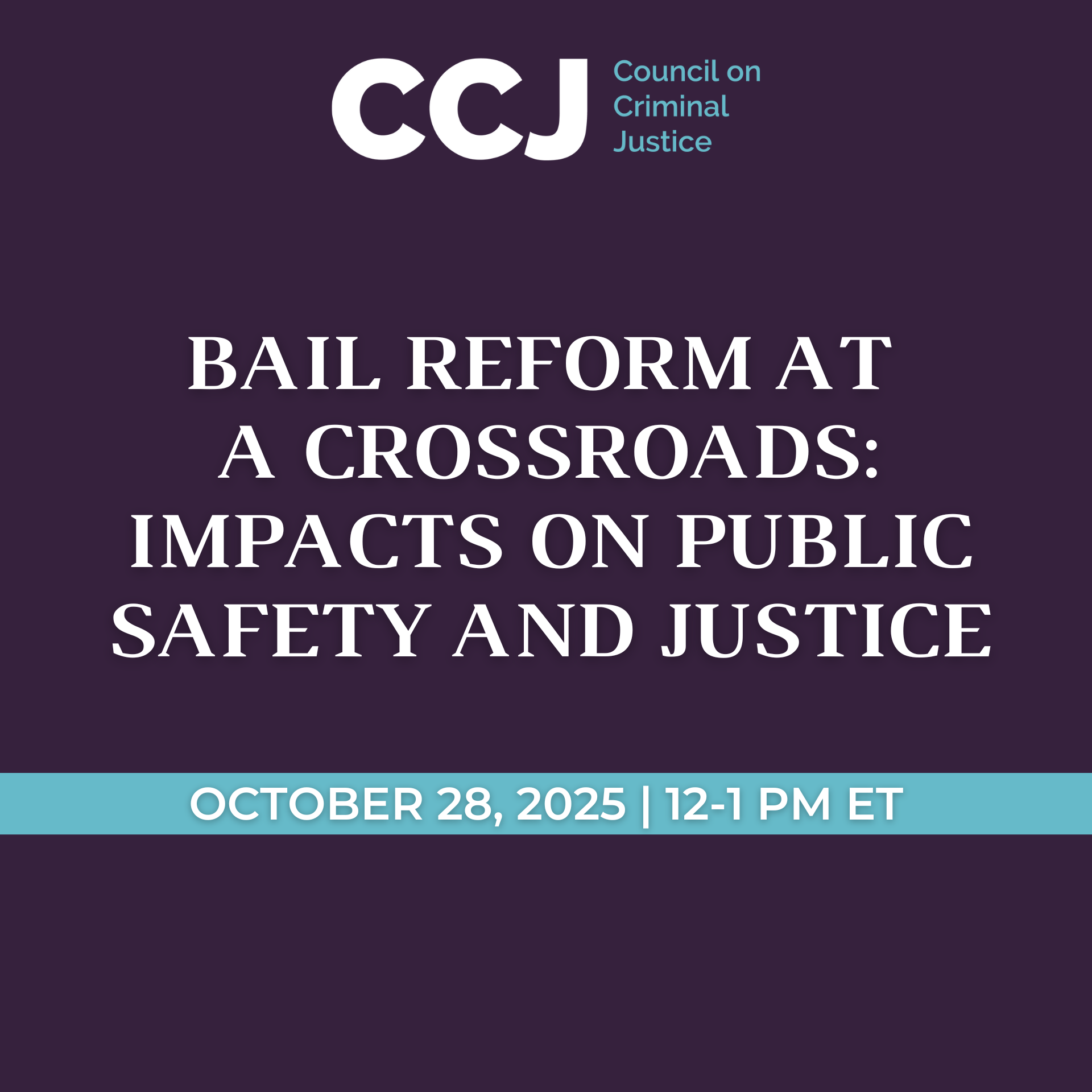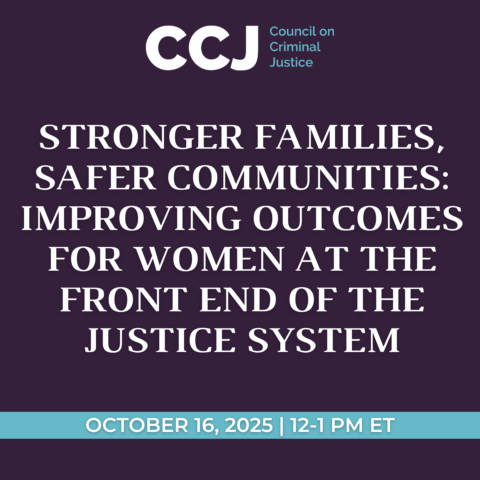Violent Victimization is Decreasing–But Not for Everyone
October 2024
By Thaddeus Johnson, Ph.D., Georgia State University
New federal crime data show that nonlethal violent victimization decreased by 11% in 2023 for Americans aged 12 and older. But while the rate of robberies, aggravated assaults, and rape/sexual assaults fell for White and Hispanic people, it moved in the opposite direction for Black Americans.
This brief explores these diverging patterns revealed in the 2023 National Crime Victimization Survey (NCVS), which was based on interviews with 226,000 people in 142,000 households and released in September 2024 by the federal Bureau of Justice Statistics.1 Apart from the approximately 19,000 homicides recorded in FBI data for 2023, the survey found there were an estimated 2.5 million serious violent crimes (robberies, aggravated assaults, and rape/sexual assaults). The analyses below exclude both homicides, due to the inability to interview victims, and less serious or so-called “simple” assaults.
The data should be interpreted with caution for a number of reasons: the victimization survey can show considerable fluctuation from year to year; many of the one-year changes are not statistically significant; and the COVID-19 pandemic altered survey methodology and reduced response rates during the study period of 2019-2023.2 Trends observed between 2022 and 2023 may not persist into 2024.
Key Takeaways
- Overall Nonlethal Violent Victimization Fell: Rates of nonlethal victimization dropped by 11% from 2022 to 2023, from 9.8 incidents per 1,000 people to 8.7 per 1,000. The decline was underpinned by an 18% decrease in aggravated assault and an 11% reduction in rape/sexual assault. However, robberies increased by 4% over this timeframe, continuing their rise from 2021.
- Black Americans Experienced Rising Victimization Rates: Victimization rates for Black Americans increased 37% from 2022 and 2023, driven by a 79% increase in robbery, 47% increase in rape/sexual assault rates, and a 16% increase in aggravated assault.
- Racial Disparities in Victimization Widened: Black Americans were more likely to be victims of violent crime than other racial groups in 2023. For instance, Black Americans were more than twice as likely to be robbed as White Americans.3
- Victimization of Hispanic Americans Drops: Nonlethal violent victimization decreased by 23% for Hispanic Americans between 2022 and 2023, with the biggest drops in aggravated assault (-20%) and rape/sexual assault (-58%). Unlike Black Americans, Hispanic Americans’ overall victimization rates fell below pre-pandemic levels in 2023.
A Different Story for Black Americans
NCVS estimates suggest that the overall reductions in crime were not shared across races. For White Americans, nonlethal violent victimization rates dropped by 14% in the 2023 survey, while aggravated assault fell by 21%. Hispanic Americans experienced an even greater decrease in the frequency of nonlethal violence (-23%), with large drops in aggravated assaults (-20%) and in rape/sexual assault (-58%). (Figure 1.)
Despite these one-year decreases, the overall nonlethal violent victimization rate for White Americans was 28% higher in 2023 than in 2019, largely due to an 80% spike between 2021 and 2022. This suggests that their violent victimization rates have not returned to pre-pandemic levels.
For Hispanic Americans, the rate of nonlethal violent victimization not only declined between 2022 and 2023, but also fell below the rate in 2019 for most offenses. The total nonlethal violent victimization rate decreased 17% from 2019 to 2023 for this group. Aggravated assault rates dropped by 39% and rape/sexual assault fell by 21% between 2019 and 2023. However, the robbery rate for Hispanic Americans rose 37% during this span.
The picture is considerably different for Black Americans, who reported increased violent victimization from 2022 to 2023. Nonlethal violent victimization rates for Black Americans jumped 37% during this period, reaching 12.3 incidents per 1,000 people in 2023, the highest of any racial group. Aggravated assault rates increased by 16%, the survey data show, while robbery rates climbed by 79%. Additionally, while rape/sexual assault rates decreased 25% from 2021 to 2022 for Black Americans, they rose 47% from 2022 to 2023.
Mixed Picture for Members of Other Racial Groups
Americans who identified with other racial groups, such as American Indian or Alaska Native, Asian, or Native Hawaiian or other Pacific Islander, and those who identified as members of two or more racial groups, experienced reductions in violent victimization from 2022 to 2023 (Figure 1). Primarily driven by a 37% drop in aggravated assault, nonlethal violent victimization rates fell by 21% for these Americans. While robbery rose by 5% and rape/sexual assault rates rose by 6%, those increases were much smaller than the increases seen for Black Americans. Additionally, besides robbery rates, which were 9% lower in 2023 compared to 2019, the remaining violent victimization rates for this group were closer to pre-pandemic levels in 2023 after more than doubling between 2021 and 2022.
Figure 1. Violent Victimization Rates by Race, 2019 – 2023
Racial Disparities in Violent Victimization
The NCVS data indicate growing racial disparities in violent victimization, with Black Americans more likely than other racial groups to experience victimization. Victimization ratios help us understand these differences by comparing the likelihood of one group being victimized to another.
The first group named in these ratios serves as the reference category. For example, a Black-White ratio compares Black Americans’ victimization risk to that of White Americans. A ratio above 1 means that Black Americans face a higher risk, while a ratio below 1 indicates a lower risk. A Black-White ratio of 3, for instance, means that Black Americans are three times more likely to be victimized than White Americans.
In 2023, Black Americans were 50% more likely to be victims of nonlethal violent victimization than White Americans, up from nearly equal rates in 2022 (Figure 2). The racial disparity increased for aggravated assault and robbery victimization, with Black people 30% more likely to be assaulted and more than twice as likely to be robbed. This expanding victimization disparity occurred because Black aggravated assault (+16%) and robbery rates (+79%) increased while the White rates for these crimes decreased by 14% and 21%, respectively, in 2023.
Figure 2. Black-White Violent Victimization Rate Ratios, 2019 – 2023
On the other hand, there was no difference in total nonlethal violent victimization rates between White and Hispanic Americans in 2023 (Figure 3). However, while Hispanic Americans were still nearly twice as likely to be robbed as White people, they were less likely to be victims of aggravated assault and rape/sexual assault.
Figure 3. Hispanic-White Violent Victimization Rate Ratios, 2019 – 2023
Comparing rates of nonlethal violent victimization between Black and Hispanic Americans shows increasing disparities (Figure 4). From 2022 to 2023, Black Americans were 40% more likely to be victims of nonlethal violent victimization than Hispanic Americans, eliminating the 35% decrease from 2021 to 2022. The largest one-year change was in rape/sexual assault offenses; in 2023 Black Americans were twice as likely as Hispanic Americans to be victims of rape/sexual assault, more than tripling this victimization gap between the two groups from 2022.
Figure 4. Black-Hispanic Violent Victimization Rate Ratios, 2019 – 2023
In 2023, victimization rate ratios increased between Black Americans and Americans who identified with other racial groups, such as American Indian or Alaska Native, Asian, or Native Hawaiian or other Pacific Islander, and those who identified as being a member of two or more racial groups, undoing the declines in disparity seen the previous year (Figure 5). The ratio for nonlethal violent victimization rose from 0.9 in 2019 to 1.6 in 2023, and for aggravated assault, it fluctuated, climbing from 1.0 in 2019 to a high of 2.1 in 2020. Although the aggravated assault ratio was lower at 1.6 in 2023 compared to three years earlier, it increased that year after decreasing in both 2021 and 2022. Even though the robbery ratio dropped from its peak of 2.6 in 2021 to 2.0 in 2023, it was still higher than the 1.2 ratio in 2019. This means that in 2023, Black Americans were twice as likely to be victims of robbery compared to Americans of other races. As for the rape/sexual assault ratio, it increased from 0.8 in 2019 to 1.2 in 2023, although it remained lower than its 2021 peak of 2.5.
Figure 5. Black-Other Race Violent Victimization Rate Ratios
Understanding Changes in Disparity
While the changes in nonlethal violent victimization rates between 2022 and 2023 are notable, most of these one-year increases and decreases within groups are not statistically significant. However, there were statistically significant differences in nonlethal violent victimization ratios between Black Americans and Hispanic Americans and Black Americans and Americans who identified with other racial groups from 2022 to 2023.
These findings indicate that Black Americans were more likely than members of other minority groups to be victims of violent crime in 2023.4 Black Americans experienced higher rates of nonlethal violence than White Americans in 2023, although the difference was not statistically significant. Taken together, the patterns illustrate a departure from 2022, when nonlethal violent victimization rates were nearly equal across races.
It’s important to remember that while examining violent victimization data in the short term can shed light on the most vulnerable groups, meaningful solutions to these disparities call for a deeper dive into long-term data and the broader social and economic conditions that drive the differences in victimization across racial and ethnic groups.
Conclusion
In 2023, violent victimization rates decreased for many people in the United States, but not for Black Americans. The data reveal a growing victimization gap for Black citizens, even as disparities narrow between White and Hispanic Americans. The increases in Black-White, Black-Hispanic, and Black-Other race racial disparity ratios underscore the urgent need for targeted, evidence-based interventions.
While the NCVS data for 2022 and 2023 show notable fluctuations in nonlethal violent victimization rates, many of these one-year changes were not statistically significant. This calls for cautious interpretation, as the trends observed between these years may not persist into 2024. Only time will tell if these shifts represent meaningful and enduring trends or if they are simply outliers. This uncertainty makes it vital to continue monitoring trends in nonlethal violent victimization. In the interim, recognizing the volatility of short-term data comparisons is key to avoiding misinterpretation and the potential misallocation of funds and resources.
About the Author
Dr. Thaddeus L. Johnson, Ph.D., a former law enforcement official in Tennessee, is a Senior Fellow at the Council on Criminal Justice. A policing, crime control, and governance equity expert, he has conducted extensive research on police lethality and coercion, street violence, recidivism, algorithmic and predictive bias, and correctional control. Dr. Johnson is also an Assistant Professor of Criminal Justice & Criminology at the Andrew Young School of Policy Studies at Georgia State University.
Acknowledgements
Stephanie Kennedy, Ernesto Lopez, and other members of the Council on Criminal Justice team provided editing and additional support for this report.
This paper was produced with support from the Annie E. Casey Foundation, Arnold Ventures, the Harry Frank Guggenheim Foundation, Southern Company Foundation, Stand Together, and CCJ’s general operating contributors.
Endnotes
1 NCVS estimates are based on victimization that occurred in the six months prior to the respondent interview, excluding the month they were interviewed. Therefore, 2023 NCVS data include crimes that occurred from July 1, 2022 to November 30, 2023, with March 15, 2023, as the midpoint. NCVS counts crimes in the year the respondent was interviewed, not the year they occurred.
2 To address the impact of modified data collection operations due to the COVID-19 pandemic, the 2020 NCVS applied additional weighting adjustments to ensure that its data remained comparable with past and future survey years.
3 Although the NCVS does not include homicide, law enforcement data reported by the Federal Bureau of Investigation show that Black Americans are also more likely to be victims of murder than members of all other racial groups. For example, in 2023, the homicide rate for Black Americans was 50 per 100,000 Black residents, a rate more than six times higher than the White rate of 8 per 100,000 White residents.
4 Two-sample t-tests assuming unequal variances were used to determine whether the difference between victimization rates and ratios in 2022 and 2023 was statistically significant.




